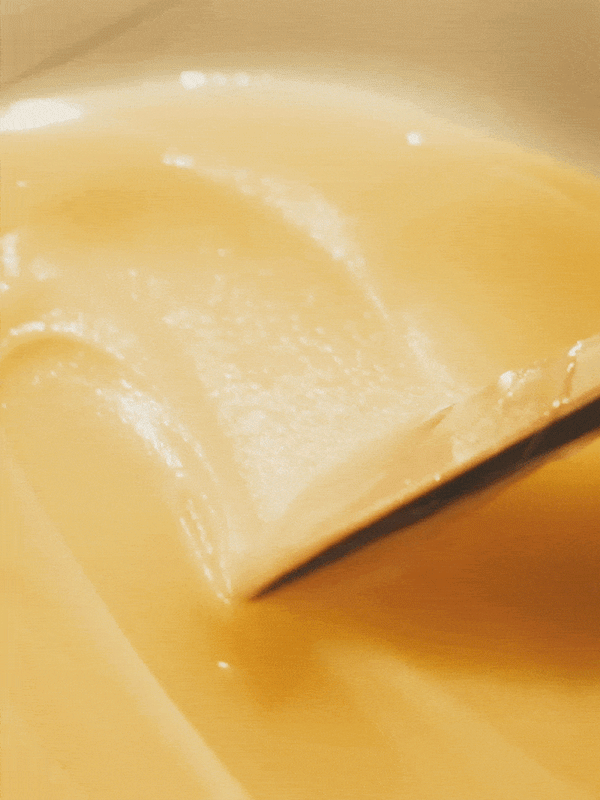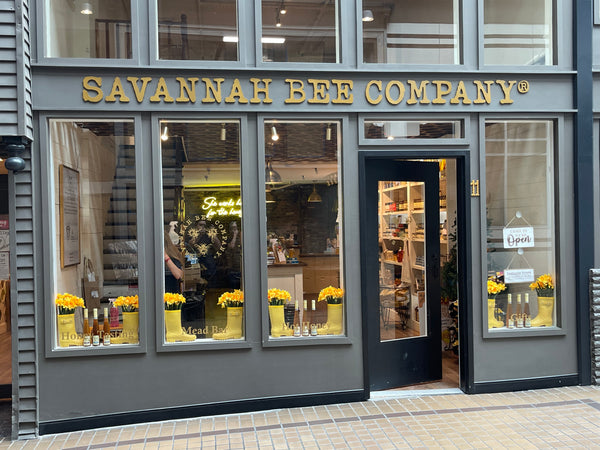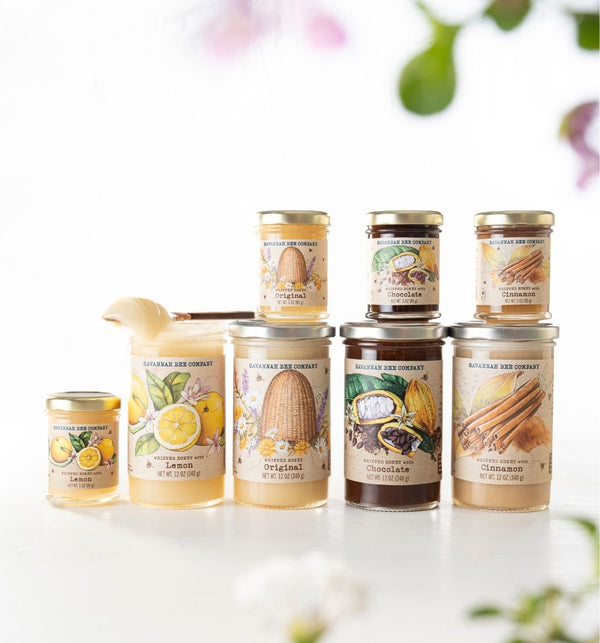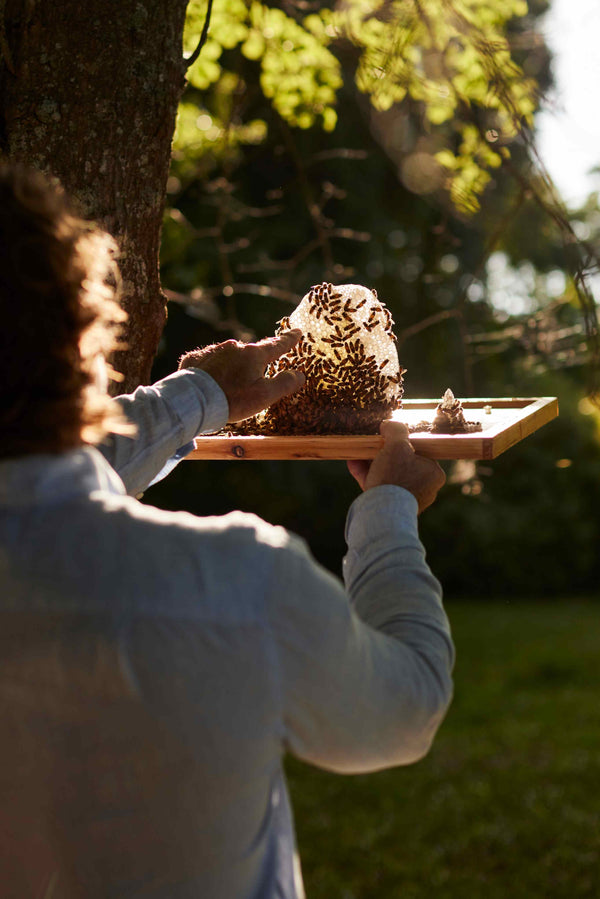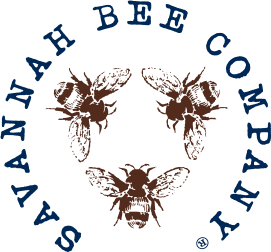What is Festooning, and Why Do Bees Do It?
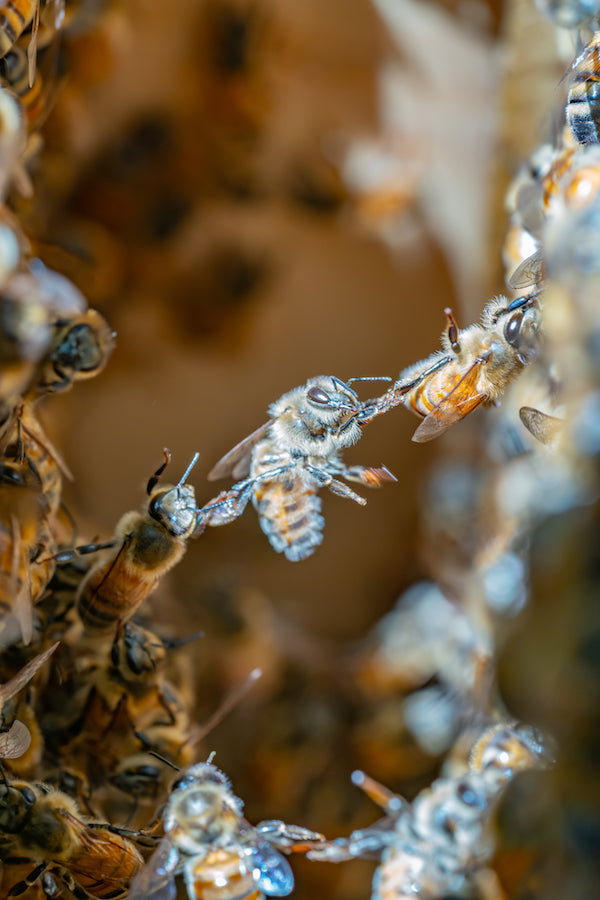
Bees are fascinating creatures.
If you hang around a beehive long enough, you’ll likely see them engaging in some pretty strange activities — maybe even ones that you never knew existed!
One of these habits is festooning. The definition of festooning is an act in which bees connect to each other by their feet to form a chain or curtain.
While scientists aren’t 100% sure on the exact purpose behind festooning, they have some good ideas. And to us, it all adds up to another reason to love bees!
What is Festooning?
You’ve probably seen bees festoon before.
This unique activity is hard to miss, and looks even cooler up close.
Bees cling onto each other with their legs, forming a hanging chain, almost like a scaffolding.
Festoons (the term for a group of bees festooning) can range from one bee wide to almost as wide as the frame of the hive.
When bees festoon, the result is a lacy, web-like pattern that moves organically with their motion.

Festoons often form over gaps in the hive or at its edges. Bees also festoon quickly when beekeepers separate two frames of the hive, which gives us an amazing look into this behavior.
It’s always the workers bees that form festoons, and they can be young or old.
However, the size of the colony often indicates how likely bees are to engage in this activity. Bees in large colonies are observed to festoon more often than bees in small colonies because there are more bees to create festoons with.
Why Bees Festoon
There are many ideas about why bees festoon, but in short, scientists aren’t exactly sure.
The main hypothesis is that festooning is a system that bees use to build their hive or repair old and broken pieces of comb.
We know that bees are all about teamwork, so it makes sense that the scaffolding structure could support the bees as they produce wax and form the comb.

Researchers have found that comb-building begins with multiple festoons that start building independently at different sites. The worker bees then connect the separate combs with transitional cells.
Even though comb-building is a very precise process, the size and orientation of each wax cell varies depending on the festoon.

While comb-building seems to be the general consensus for why bees festoon, some scientists have other ideas.
Some believe that festooning helps bees maintain a consistent temperature ideal for wax creation, or that they form to measure distances, kind of like the way we say that something is three hands high or an arm’s length away.
Others think that it could be for protection, especially when bees create their hives in tree hollows.
When this happens, bees will form a festoon that acts like a net on the ceiling of the hollow, which often remains after the comb is built.
This may indicate that the festoon protects the hive and the bees from external threats or temperature changes.
Some scientists even thought that bees could only produce wax while they’re festooning — but this has been debunked.
Researchers W. J. Muller & H. R. Hepburn from the Department of Zoology and Entomology at Rhodes University found that beeswax created in festoons represents only a fraction of all the wax created in the hive.
As you can tell, festooning is a hotly-contested subject in the bee world!
Even so, we appreciate the beauty and mystery in the ways that bees work.
They have special reasons for doing what they do, and it seems to be working out pretty well for them!
Maybe one day we’ll figure out the real meaning of festooning, but until then, we can admire their intelligence and hard work.
#savethebees
Published



